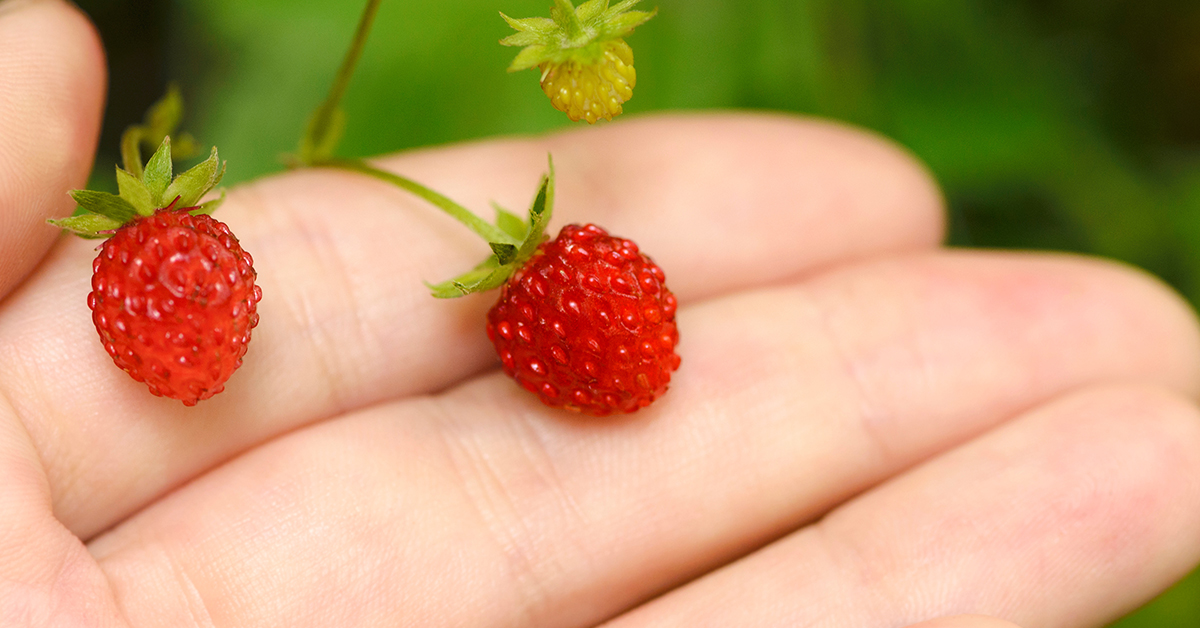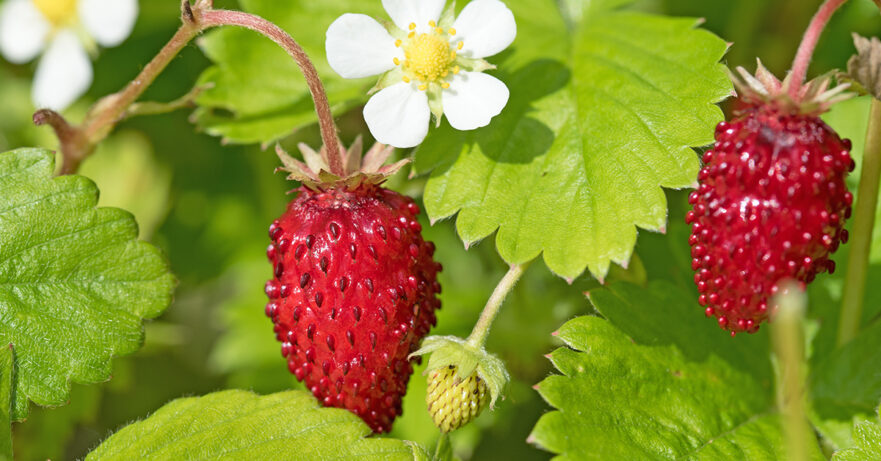In this monograph about wild strawberry:
📖 Introduction | 🌱 Botanical Description | 📜 Traditional Uses | 🔍 Phytochemistry | ✨ Applications and Uses | 🛡️ Safety Profile
📖 Introduction
Wild strawberry (Fragaria vesca) commonly known as woodland strawberry, is a perennial plant renowned for its delicious fruit and medicinal properties. Traditionally utilized for its nutritional value and therapeutic benefits, wild strawberry has been a component of various cultural remedies, particularly for skin ailments and digestive issues.
| English Name | Wild Strawberry |
| Latin Name | Fragaria vesca |
| Parts Used | Leaves, fruits |
| Traditional Uses | Skin health, digestive aid, immune enhancement |
| Herbal Actions | Astringent, diuretic, anti-inflammatory |
🌱 Botanical Description
Scientific Classification
Fragaria vesca belongs to the Rosaceae family.
Physical Characteristics
This plant features small, trifoliate leaves and white flowers. It also bears red, aromatic fruits smaller than common garden strawberries.
Natural Habitat and Cultivation Details
Native to temperate regions of the Northern Hemisphere, wild strawberries thrive in forests, meadows, and natural clearings. They prefer well-drained, slightly acidic soil and partial shade but can also adapt to various environmental conditions.
📜 Traditional Uses
Wild strawberries have been cherished historically for their use in soothing gastrointestinal distress and supporting skin health. Due to their mild astringent properties, the leaves and fruits have been used in folk medicine to treat mild diarrhea and as a skin cleanser.

🔍 Phytochemistry (Active Constituents)
Wild strawberry’s health benefits are attributed to its rich phytochemical makeup, including:
- Ellagic acid: A polyphenol with antioxidant properties, known for supporting skin health and providing anti-inflammatory benefits.
- Tannins: They contribute to the astringent properties and help treat skin conditions and diarrhea.
- Vitamin C: This vitamin is abundant in fruits, providing antioxidant benefits and supporting immune function. It is also crucial for collagen synthesis, aiding skin repair and regeneration.
✨ Applications and Uses
In herbal medicine, wild strawberry is utilized for:
- Skin health: The ellagic acid and tannins make it beneficial for improving skin elasticity and treating skin irritations.
- Digestive aid: Used to soothe the digestive tract and relieve symptoms of mild gastrointestinal disorders such as diarrhea. While the astringent properties can help with mild diarrhea, excessive use should be avoided to prevent potential constipation or other digestive issues.
- Nutritional supplement: The fruits are highly nutritious, providing natural sources of vitamins and antioxidants.
🛡️ Safety Profile
Wild strawberry is generally considered safe when used in food quantities.
However, due to its tannin content, excessive consumption of wild strawberry leaves might lead to stomach irritation or disrupt thyroid function with prolonged use.
Pregnant and breastfeeding women should consult a healthcare provider before using wild strawberries in medicinal amounts.
As with all herbs, individuals with pre-existing health conditions or those taking other medications should consult a healthcare professional before beginning any new herbal treatment to ensure compatibility and safety.
